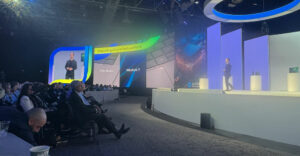
Supercomputer maker has introduced the CX1, a small and low-cost supercomputer running Microsoft’s new HPC Server 2008. The system is scheduled for official release Sept. 22.
Aimed at users across a range of markets, including financial services, aerospace, automotive, petroleum, life sciences, government, academia and digital media, the systems are priced from US$25,000 to more than $60,000.
They boast an assortment of user-friendly features. In addition, the comparatively compact size of the CX1 means that the system can be housed in most office environments.
Filling the HPC Gap
Studies released by the Council on Competiveness and the Defense Advanced Research Projects Agency (DARPA) found that a majority of firms engaged in high performance computing (HPC) said the technology is indispensable and vital to their ability to compete and survive. Smaller organizations such as workgroups and departments in larger firms have often found HPC systems cost-prohibitive and have been hampered by the inability to access in-house IT experts to help them use the high-powered systems.
The CX1, according to Cray, was designed to address these impediments to deploying an HPC. The system is the lowest-priced supercomputer available from the manufacturer.
The CX1 offers up to 8 nodes and 16 dual- or quad-core Intel Xeon processors. It delivers up to 64 gigabytes of memory per node and up to 4 terabytes of internal storage.
The systems can be configured, according to Cray, with a combination of compute, storage and visualization blades in order to meet the requirements of individual customers. The deskside-sized machines are also interoperable with Linux.
Raising the Supercomputer Bar
Cray’s name recognition and the inclusion of HPC Server 2008 are two factors working in the computer’s favor, said Kevin Wohlever, director of Supercomputing Operations at the Ohio Supercomputer Center.
“That Cray is involved in this to take personalized supercomputing down to a user level like this and that Cray has teamed with Microsoft are significant,” he told TechNewsWorld.
However, Wohlever noted that while 10 years ago the CX1 would have been considered a supercomputer based on their capacity and capability, that’s not necessarily the case today.
“What they are, they are entry-level points for researchers and can provide good personalized computational research environment for small groups. This is not a supercomputer environment. Ten years ago you had to spend $100 million or $10 million to get this environment, now you can buy it for $25,000, but in the meantime there’s five new levels [of supercomputers] above that,” he stated.
In fact, supercomputers today are largely clusters assembled from large volume components, according to Gordon Haff, an analyst at Illuminata.
The partnership between Cray and Microsoft fulfills the goal of both companies to enter this market.
“Microsoft has been pushing to get more share in this space for ages — although they’ve ramped up their efforts over the past couple of years. It’s still a small part of the HPC market, but it leverages some applications that are only available on Windows as well as desktop development tools,” he told TechNewsWorld.
“In short, for companies that already do a lot of their engineering work on Windows systems, extending Windows into their HPC clusters can make a lot of sense. From Cray’s perspective, this is just about expanding addressable market,” Haff said.





















































How many flops we talkin’? It’s one of the big selling points for simulation and visualization. Just how fast are yuh, Sundance?